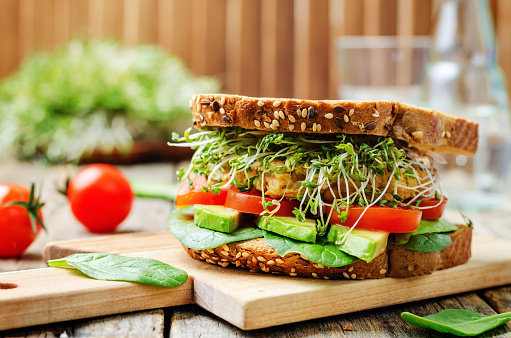Building A Better Sandwich For Your Lunch

Everyone is busy and not everyone is a highly-trained nutritionist who knows what the body needs and how to give it. This is why fast food is so popular. And even fast food that calls itself healthy, isn’t always really all it’s cracked up to be.
Nearly everyone on the planet is guilty of placing convenience ahead of health, and chances are that type of behavior isn’t going to stop anytime soon. Making small, attainable goals that put your health first is possible and lunch is the perfect place to start.
Here’s what you need to know about a few of the foods you may currently be eating and some healthier, tasty alternatives to put in their place.
Deli Meat Deception
Deli meat is quick, easy and tasty. The fact that it’s not deep fried is another bonus that may lead one to think of deli meat as a great healthy go-to lunch. Unfortunately, deli meat can be quite deceptive that way.
The truth is that deli meat, which is basically highly processed meat, is not good for you at all. It’s created by smoking, salting, or curing meat and then adding chemical preservatives to it for “freshness.” Some health experts suspect that the chemicals used in deli meat have cancer-causing compounds and that eating deli meat has been linked to an increased risk of colon cancer.
Cancer aside, the sodium in deli meat is not good for you at all. One slice of bologna, for example, can have as much as 480 milligrams of salt. That’s a lot considering the currently recommended daily intake of salt is 2,300 milligrams per day. And who eats one solitary slice of bologna?
Deli meat increases your risk for cardiovascular disease, high blood pressure, and even diabetes. That’s why it’s worth it to find some tasty alternatives to satisfy your lunchtime sandwich cravings.
Healthier Alternatives
The good news is that if you fancy a sandwich for lunch because it’s quick and convenient, you don’t have to stop. There are even meats you can add to sandwiches that are a healthy source of protein, simply look for something that is freshly sliced off the bone or is low in sodium. Make sure to look at the nutrition label so you can judge how much sodium you’re getting and if it’s the right healthy choice for your sandwich.
Building a healthy sandwich is easy. Here are some ideas to help you get started:
- Add whole-grain bread – Make sure the bread you choose is of the whole grain variety with a lot of fiber. Stay away from bread with highly refined starches. Those break down too fast and won’t be as satisfying to help you get through the afternoon. You can also go breadless and pack your tasty sandwich toppings between two pieces of lettuce.
- Choose your protein wisely – You can stay away from deli meats and still add a lot of satisfying protein to your sandwich. Chicken, salmon, or tuna are great choices but you can also opt to go meatless with cheese, hummus, eggs, peanut butter, mushrooms, or avocados that add a punch of protein and healthy fats.
- Get fruity – Don’t shy away from adding fruit to a sandwich! You can buy spreadable fruit that has less sugar than jams or jellies, or you can opt to add slices of apples or bananas to your peanut butter sandwich. Some fruits even work with cheese or meat, such as mandarin oranges. Experiment and you may just find a delicious combination you can’t live without.
- Go heavy on the veggies – A sandwich is a place where a vegetable can really shine. Roasted or grilled mushrooms are a great option, as are toppings such as cucumbers, tomatoes, spinach, peppers, and onions. They add flavor without adding a lot of calories.
If you want the occasional BLT or ham sandwich, then that likely isn’t going to pose a risk to your health. But having highly processed and preserved meats often simply isn’t good for you in the long run. That’s why it’s important to find some alternatives that can satisfy your lunch cravings but still keep your health a priority.
